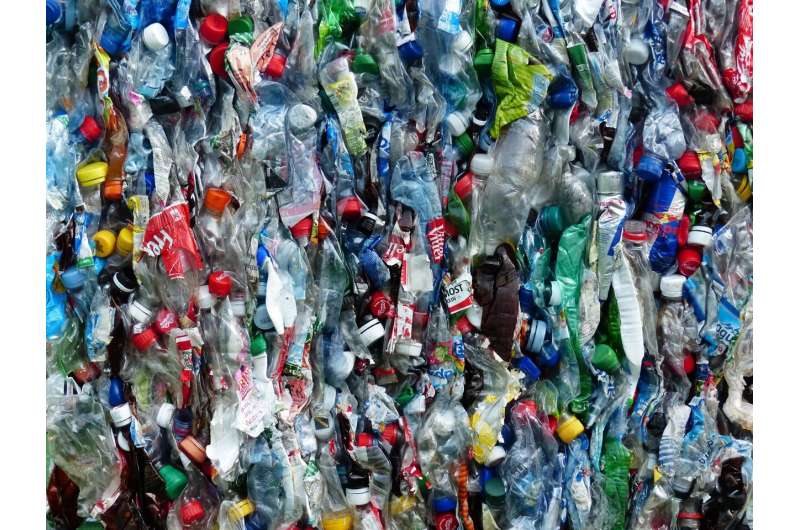

An overview of plastics waste management and its sustainable approaches
source link: https://techxplore.com/news/2022-11-overview-plastics-sustainable-approaches.html
Go to the source link to view the article. You can view the picture content, updated content and better typesetting reading experience. If the link is broken, please click the button below to view the snapshot at that time.

November 8, 2022
An overview of plastics waste management and its sustainable approaches
by David Bradley, Inderscience

Researchers in India have reviewed the state of play when it comes to plastics recycling in the International Journal of Environmental Technology and Management. Their main conclusion is that there are huge inefficiencies in plastics recycling and that major improvements are needed to the reprocessing systems so that we might begin to address this growing problem urgently.
Soubhagya Keshari Chand of the Central Institute of Petrochemicals Engineering and Technology (CIPET) pat of the Government of India in Odisha and Sasmita Chand of the Center of Sustainable Built Environment at Manipal Academy of Higher Education in Karnataka, India explain that as with many other nations, plastic waste is an enormous problem thanks to huge consumption and arbitrary disposal. Even places that have recycling facilities in place are often failing to collect and process the vast majority of the plastic waste we produce.
The team points out that there are two major forms of plastics. There are thermoplastics, which can be softened by heating and remolded into new objects. Among the thermoplastics are polyethylene terephthalate (PET), high density polyethylene (HDPE), low density polyethylene (LDPE), polypropylene (PP) the most abundant polymer, polyvinylchloride (PVC), polystyrene (PS), and several others.
The other group is the thermosetting plastics which simply become tougher when heated, and indeed, are commonly cured into that state for use. There is no straightforward way to recycle them in the conventional sense as can be done with thermoplastics. The thermoset group includes polyurethanes, epoxy resins, polyimides, and many more. However, much research is being done into the repurposing of thermosetting plastic waste often in combination with other materials for engineering and infrastructure as useful low-density and relatively tough materials for fillers and structures.
Worldwide plastic production is almost 400 million tons annually, it was around 300 million tons a decade ago. The numbers continue to rise. Not surprisingly, it is often said that we live in the Plastic Age. Synthetic polymers came to the fore in the 1940s and our reliance on them in almost every aspect of our lives has grown ever since.
The chemical structures of wholly synthetic polymers fabricated from oil mean that while an individual piece of plastic may well be broken down into tiny fragments, micro-plastics, there is very little chance of these materials degrading chemically to molecular components and so they persist as intractable materials throughout the environment. Moreover, while they cannot be digested they can be ingested and are becoming entrenched in food chains from the animals of the deep ocean to the high flyers.
If plastics cannot be recycled, there is an alternative, photochemical degradation with ultraviolet light, which would represent a highly accelerated form of the breakdown that occurs in sunlight, but this requires a lot of power which brings its own problems unless the electricity used is from zero-carbon, sustainable source. The unacceptable alternatives to that kind of degradation or recycling of plastics are, of course, simply disposing of them in open-air dumps, burying them in landfill, or incinerating them, which can be highly polluting, although it can be used for power generation. Recycling and repurposing plastics must be the way forward.
Recommend
-
 9
9
Overview of the different approaches to putting Machine Learning (ML) models in production
-
 19
19
New plant-based plastics can be chemically recycled with near-perfect efficiencyBy Zack FishmanFebruary 17, 2021.Mobile phone case made with 3D printing...
-
 10
10
Supply chain The Latest Supply Chain Disruption: Plastics March 26, 2021 ...
-
 5
5
5 Approaches for Sustainable UXPeople eat, move, stay warm and consume in a manner that gambles with the future of our planet. This behavior must change and UX Design can play a vital part of that change.P...
-
 7
7
May 17, 2021 ...
-
 10
10
Biodegradable Plastic Market Size was US$ 4.3 Billion in 2021. Industry Trends, Growth, Insoght, Impact of COVID-19, Company Analysis, Global Forecast 2021-2027.
-
 12
12
Java Outsourcing, a Strong Business, and Management Approaches
-
 2
2
Ocean plastics: How much do rich countries contribute by shipping their waste overseas?Many countries ship plastic waste overseas. How much of the world’s waste is traded, and how bi...
-
 7
7
Sustainable Bitcoin Protocol Launches Waste Gas Methodology With New Pilot
-
 10
10
A roadmap to sustainable plastic waste management for triboelectric nanogenerator production by Newcastle University in S...
About Joyk
Aggregate valuable and interesting links.
Joyk means Joy of geeK